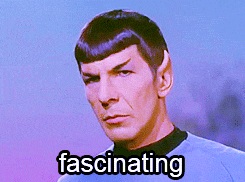In the social entrepreneurship world, everyone talks about the benefits of failing fast so you can innovate and accelerate. But that’s easier said than done. How do you actually turn the searing pain of flubbing up into something useful? Try these three steps, and your next “oops” can become fodder for true future business success.
Have you ever had a store clerk admit to you that it’s their first day on the job? They sheepishly smile and say, “I’ve only worked here for six hours. I’m still getting the hang of this!” Their admission opens an opportunity for connection, empathy, and encouragement, perhaps even forgiveness. A new employee getting up to speed can admit incompetence without being incompetent. So how long does the “training period” last for social entrepreneurs carving new territory and discovering new ways of working?
Human brains like certainty. We’re wired to feel good about knowing. Sometimes this positive feedback about knowing from the pleasure centers reinforces our innate desire to learn more, but the brain can also become addicted to thinking we “already know” rather than always trying to learn. Uncertainty may also cause so much anxiety that we prematurely sacrifice potential insights because we are in such a rush to return to certainty’s comfortable embrace. Yet our missions call for us to do the most we can with what we’ve got. We have an imperative to find the best way forward. What if we miss a better approach because we “already know”? Unseat certainty for the purpose of learning. It’s highly likely that you don’t yet know some important thing, no matter the current situation.
Borrowing the humility of the new store clerk, let’s admit that we’re running experiments about how to build an organization that serves a higher purpose while making a profit, taking good care of people, participating in the community, protecting the environment, following the regulations, using resources wisely, and more. Of course we’re likely to fail and recover along the way; it’s hard. Let’s admit we’re still figuring it out.
This frame gives us a long-term license to make good-intentioned mistakes in service of learning our way to a better future. Failing together because we are exploring and innovating awesome stuff soothes the sting. As wildly successful restaurateur Danny Meyer once wrote, “The road to success is paved with mistakes well handled.”
Usually the learning comes after the failure, sometimes much, much later — and sometimes not at all. We can spend a lifetime defending against the discomfort of learning or we can go after it like we are deciphering a puzzle.
Try shifting perspective to prepare for reflection questions. You could imagine yourself in a later stage in life — you’re retiring, it has been a wonderful career, and you look back on this instance of failure, considering it from a future vantage point. Now, with this future point of view in mind, seek to understand your contributions to the results in this instance. Becoming vulnerable by setting aside our defenses and allowing ourselves to truly face the failure allows the insights to penetrate.
Ask:
• How could this setback be a part of a larger arc of progress? List three ways.
• If this type of situation were to work out ideally next time, what would it be like?
• What are the most important aspects of your ideal outcome? What makes it great?
• What would be even better?
• What conditions would support a great outcome?
• In what ways are your actions aligned with the needs of your vision?
• From where you stand today, what first steps can you take based on what you have learned?
Formulate your own questions, framed to notice what you can use from the experience to improve the future.
Another perspective to try on: to inspire more objectivity, imagine Leonard Nimoy as Mr. Spock saying “fascinating.”

Cultivate curiosity to dispassionately evaluate data and behavior and find more options.
When we attribute the good or bad that happens to only the individuals involved, we may fail to see the roles of the systems and structures that shape behavior. What system, or lack thereof, gave rise to this failure? How can the system be adjusted based on the insights created from failure?
Use small setbacks to improve the performance of critical systems. For instance, when a consultant at our firm once sent documents that had not been proofed to a client, the learning went beyond the individual. We explored onboarding procedures, training materials, and our mandatory “triple check” process for client deliverables. Was this consultant not adequately trained? Were the documents unclear? Or was this a slightly different circumstance that wasn’t covered by the systems we had in place? What could we learn or do to prevent this from happening again? By adjusting any or all of these systemic issues, we were able to reinforce the value created from learning at the individual, team, and organizational levels to create an easier pathway towards success in the future.
There are many ways to give meaning to failure, yet many people find themselves attached to negative explanations that make them feel bad and make it harder for them to move forward. Be more deliberate in thinking about how this failure impacts you and your feelings. Choose to see this failure compassionately, in the context of your intentions, and as just one of many steps and missteps you learned from on the journey.
You may even someday enjoy telling the story of this failure with all its twists and turns — especially if the failure catalyzed a shift for the better.






